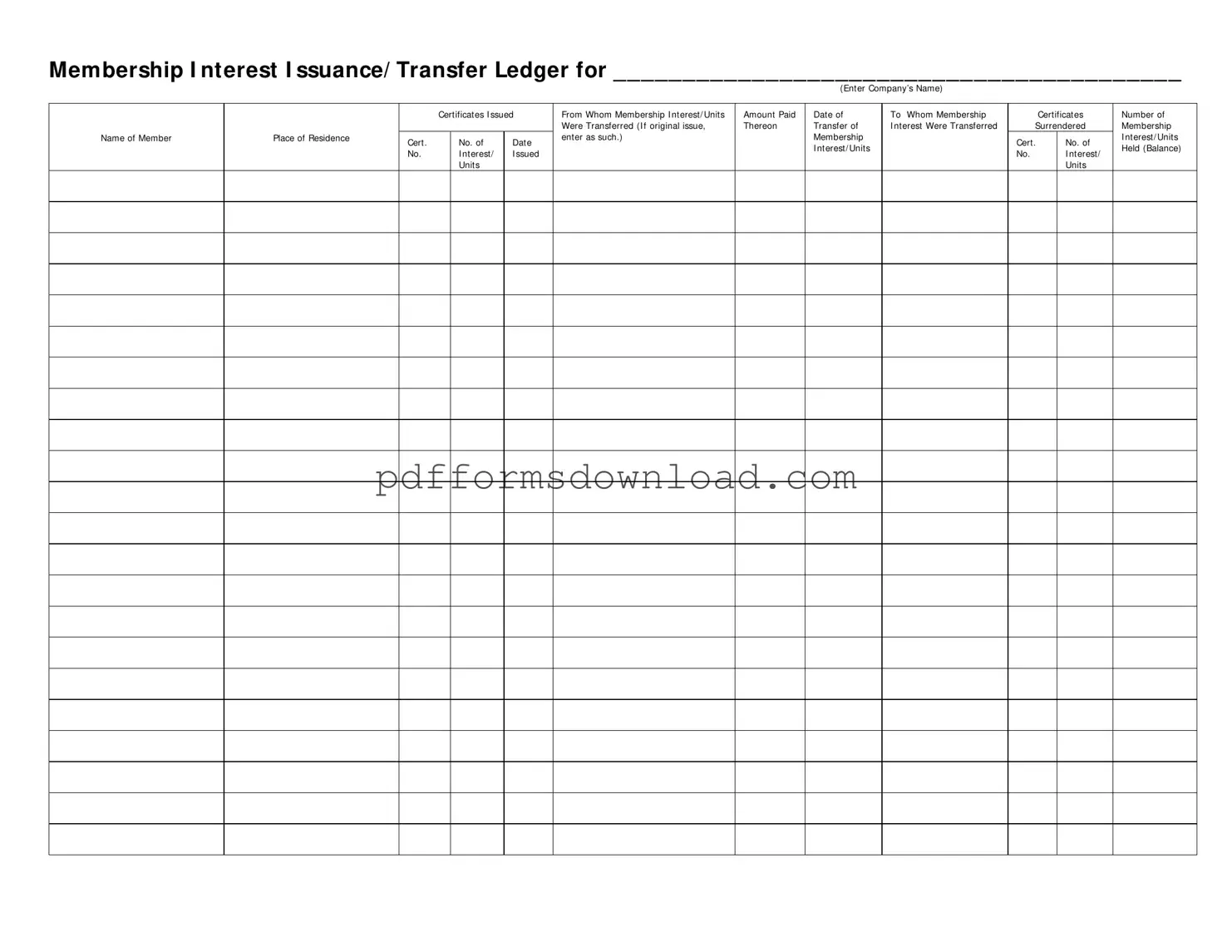What is the purpose of the Membership Ledger form?
The Membership Ledger form serves as a record-keeping tool for organizations to track the issuance and transfer of membership interests or units. It provides a structured way to document the details of each transaction, including the names of the parties involved, the amount paid, and the dates of issuance and transfer. This ensures transparency and accountability within the organization, as well as compliance with any applicable regulations.
What information is required to complete the Membership Ledger form?
To accurately fill out the Membership Ledger form, several key pieces of information must be provided. This includes the name of the company, details of certificates issued, the names of members involved in the transactions, the amount paid for membership interests or units, and the dates of issuance and transfer. Additionally, it is important to record the certificate numbers and the balance of membership interests or units held after each transaction. Proper documentation is essential for maintaining accurate records.
Who is responsible for maintaining the Membership Ledger?
The responsibility for maintaining the Membership Ledger typically falls on the organization’s administrative staff or designated officers. These individuals must ensure that all transactions are recorded promptly and accurately. Regular audits may also be conducted to verify the information in the ledger and to ensure that it reflects the current status of membership interests or units. This helps to prevent discrepancies and maintain the integrity of the organization’s records.
How can discrepancies in the Membership Ledger be resolved?
Discrepancies in the Membership Ledger can be addressed through a systematic review process. First, the parties involved should compare their records to identify any inconsistencies. If a mistake is found, it is essential to document the correction clearly in the ledger, noting the reason for the change and the date it was made. In some cases, it may be necessary to consult legal or financial advisors to ensure that all corrections are compliant with applicable laws and regulations. Maintaining open communication among members can also facilitate the resolution of any issues.
